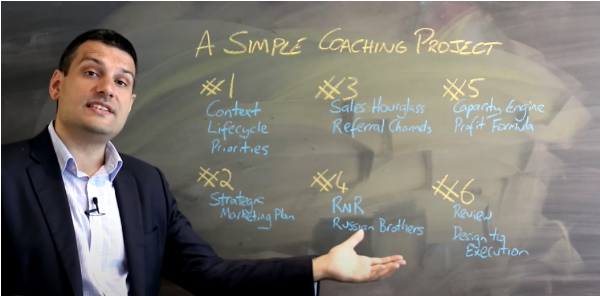Which Type of Joint Venture is Right for You? In Blackboard Fridays, Jacob talks about Legals and Growth Planning. Need this implemented into your business? Talk to the international business advisor who can do exactly that – Contact Jacob, Learn More, or Subscribe for Updates.
The famed 20th Century poet Vanilla Ice taught us all to Stop, Collaborate, and Listen.
Wonderfully, this is a conversation I find myself having more and more often – as different business leaders come together to create something bigger than themselves, to solve large commercial problems.
What I also hear is a lot of uncertainty about the WHAT and HOW of a joint venture – are we collaborating side-by-side, are we merging, are we potentially even creating a new business, a third space?
In this week’s episode, I explain:
- The two categories of business (Product and Channel) and why it’s important Joint Ventures are a combination of those two
- Break down the basic responsibilities of a business – from lead generation to invoicing – to explain the different options
- Give meaningful options for helping decide whether your JV is a Referral or Distribution relationship, a License or a Franchise opportunity, or a full-blown new venture.
If this conversation is relevant for you:
- Watch Blackboard Friday episodes 44 [https://jacobaldridge.com/business/the-8-questions-to-ask-when-forming-a-business-partnership-part-one/], 45 [https://jacobaldridge.com/business/the-4-operational-questions-to-ask-when-forming-a-business-partnership/ ], and 77 [https://jacobaldridge.com/business/the-good-the-bad-and-the-ugly-of-business-partnerships/ ] on Partnerships
- Download the Slides and notes from our recent Business Partnership event [http://businessdepot.com.au/insights/businessdepot-live-you-me-the-company-wrap-up]
- Educate yourself about Shareholders Agreements [http://businessdepot.com.au/insights/all-you-need-to-know-about-shareholders-agreements]
- Ask the businessDEPOT team to facilitate a workshop or coaching session with your potential partners to answer all these questions in a safe and productive space (Just hit Reply!)
Check out the hook while my DJ revolves it in this week’s episode here.
Who is Jacob Aldridge, Business Coach?
“The smart and quirky advisor who gets sh!t done in business.” Back independent since 2019.
Since April 2006, I’ve been an international business advisor providing bespoke solutions for privately-owned businesses with 12-96 employees.
At this stage you have proven your business model, but you’re struggling to turn aspirations into day-to-day reality. You are still responsible for all 28 areas of your business, but you don’t have the time or budget to hire 28 different experts.
You need 1 person you can trust who can show you how everything in your business is connected, and which areas to prioritise first.
That’s me.
Learn more here. Or Let’s chat.
Transcript
Welcome, Blackborders, to everybody’sfavorite quiz show, which type of jointventure is right for you? Okay, so it’snot a quiz, but it is a question I’m receiving a lot more, and I think that’s a really positive sign for the collaborative approach of the modern business.
So, if you’re getting to businesses, two business leaders together to do something as a combination, as a joint venture, which type of joint, venture is right for you?
Well, the first question before we even get into this mix is understanding the difference between a product business and a channel business and asking yourself which of those are you and which of those is your joint venture partner?
A product business is one that excels at research and development, new technology, perhaps, new services, new innovative products that they want to take to market. A channel business excels at creating relationships, so they’re the ones who have the opportunity to take those products to market, and the simplest example I always used for this is a company like Kellogg’s, that makes cornflakes, is a product company.
Your local supermarket is a channel company. Together, they work to get those cornflakes into your trolley on an easy basis, where they both make money and they both win. So, if you’re getting into a joint-venture relationship, ideally, you sit in one of these spaces at a high level, and your partner sits in the other.
That’s where the best pairing can come up because if you’re both sitting in the same category, chances are the conversation you’re having is more of a merger or an acquisition, not a joint venture. So, how,then, do the different joint ventures roll out?
Well, I’ve broken down the business model into these five steps. Who does the lead generation? Who does the sale? Who delivers the work? Who, and which brand is that work delivered, and then who sends the invoice?
Let’s go through these one by one. The first, the leads are created by the channel business and that of means that they’re also doing the sale. This is, after all, what they do best, find the new clients and sell them. The actual work is done by the product company. Now, remembering product may be a service, iy maybe consulting or maybe it is an off-the-shelf widget.
The product company actually does the delivery using the product company’s brand, and the product company sends the invoice. This is a referral relationship. We find the clients. We send them to you and you do the work, and sometimes, I even see a situation where the channel company just introduces the lead. They don’t even do the sales themselves.
The product company is responsible for that and in those situations, the referral fee, the percentage of revenue that the channel company takes as part of that relationship,is usually a little bit smaller. The more they do, the more percentage they get for the sales.
If we move down what if the channel company does maintain that relationship? They do take responsibility for the sales, and then at the other end they also send out the invoice. Well, now what we have is much more of a distributor relationship.
Kellogg’s and your supermarket is a classic example of this. You’re buying Kellogg’s cornflakes that they’ve made under their brand but you’re giving your money to the supermarket.
They’re distributing that product. Sometimes, for service-type product businesses, I see this referred to as project management where the channel company manages the relationship, manages the project, manages the money at the end, and as a result takes their percentage of that revenue.
You see here, we’re still very much two separate businesses working together. What about this third instance, where you’ve got the channel company taking full responsibility through the whole process?
In this case, they’re still delivering the work of the product company. They haven’t invented a new product. They’re still working with the product company deliver hat service, maybe it’s been trained in to the channel company’s team, but it’s done under the channel company’s brand, and the client only has a relationship with the channel company.
This is your classic license or white label type arrangement, where you take that product license it into the channel business, and then they deliver it to their clients and their relationships. Sometimes, a product company feels a need to control, own or brand that product, even if they’re not the ones doing the doing and doing the delivery, and so that’s where we get this fourth option.
You’ll see here even though the channel company is trained, is licensed to deliver that product, they’re still using the product company’s brand, and in this case, we really are looking at a franchise.
The channel company has franchised the rights to use both the system, the product, and the product company’s brand and different franchises have different arrangements for how the invoices are sent and how that money is managed to make sure that everybody wins.
You might be looking at these options and feeling that that’s it. That’s exactly the relationship we’re looking at doing. It is just a simple referral relationship. We don’t need to get more complicated, or you might be looking at all of these and going, “Well, it’s not that clear-cut, Jacob. We’re not sure we both want to be working on lead generation together. Either of us might do the sale. We’re not too concerned about who does the actual delivery, and and an actual fact because we’re working together.”
It’s probably a a new brand and it might be a whole new entity that sends out that invoice under that new brand. This is where you are finally, genuinely talking about a new joint venture, where there’s uncertainty, wither, or, both, new, those kind of conversations is when it’s not a referral, a distributor, a license, or a franchise arrangement. You really are creating something new together.
Congratulations, you’ve won the joint venture quiz. There’s more questions for you though, and I’d recommend that you read into or watch our Blackboard Fridays videos on partnerships episodes 44 and 45, and Strategic referral channels, episodes 48 and 49, to give you more questions to determine that this relationship between these two categories of business is going to deliver the outcomes that make everybody a winner.
Next Steps
Want to learn more about how this can apply to your business? It costs nothing to chat:
- Email me jacob@jacobaldridge.com (I read them all)
- Call, Text, or WhatsApp me +61 427 151 181
- Or just Subscribe https://jacobaldridge.com/about/subscribe-to-jacob-aldridge-com/ to stay in touch




